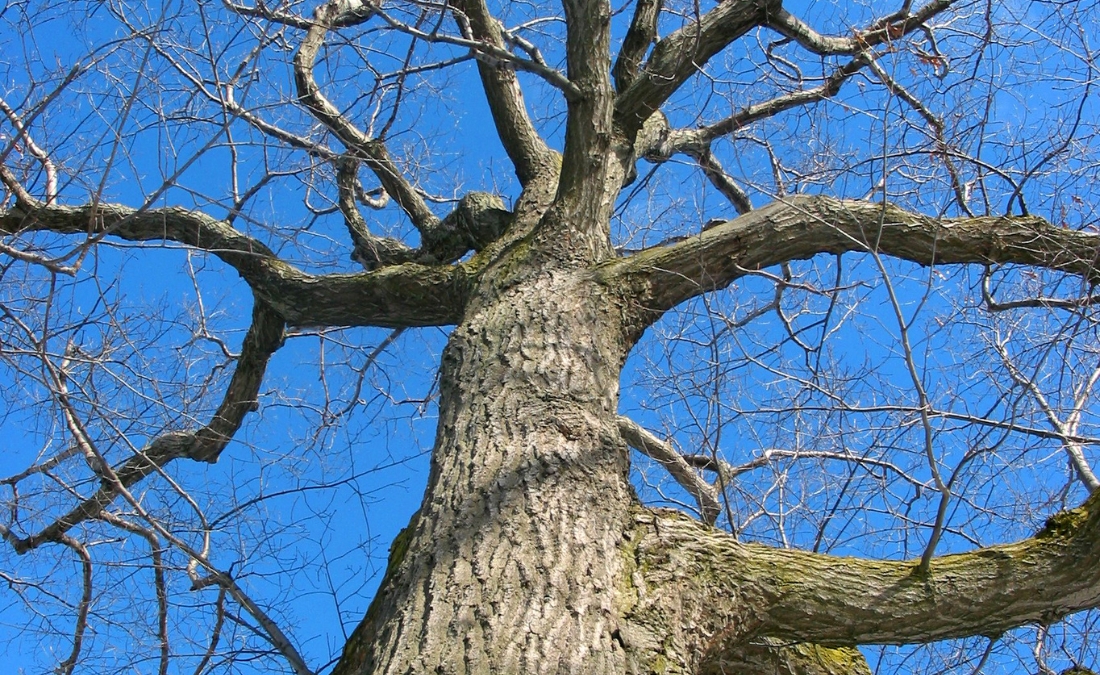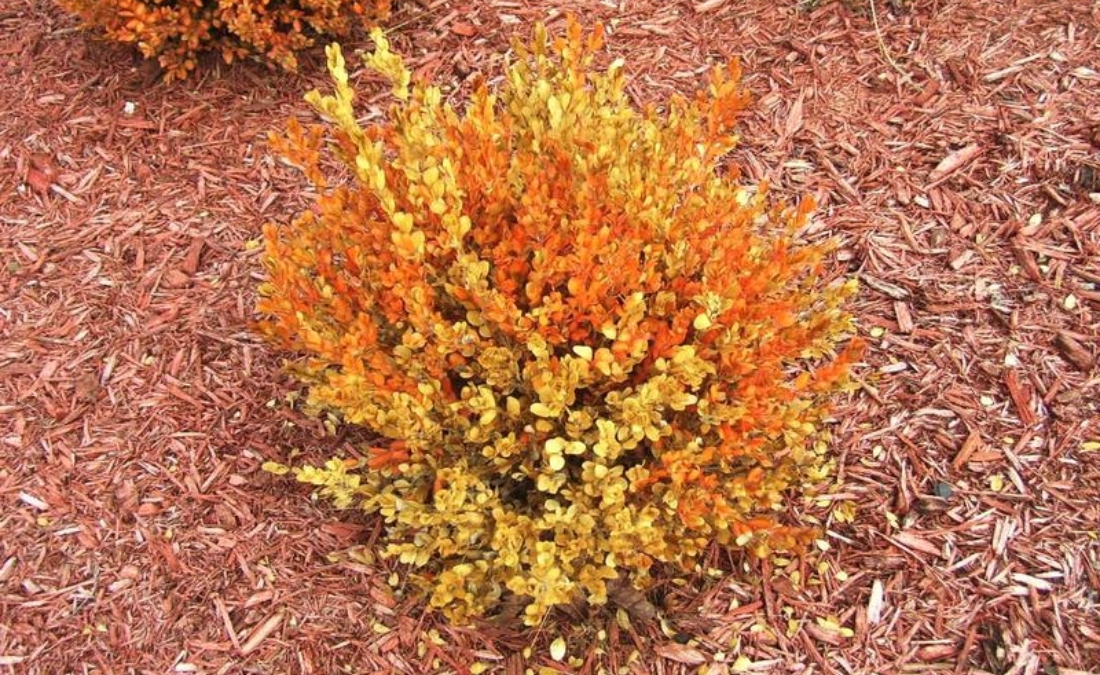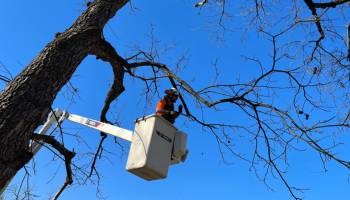Sweet Gum Tree Care: Tips for Growing and Maintaining Sweet Gums in the Midwest
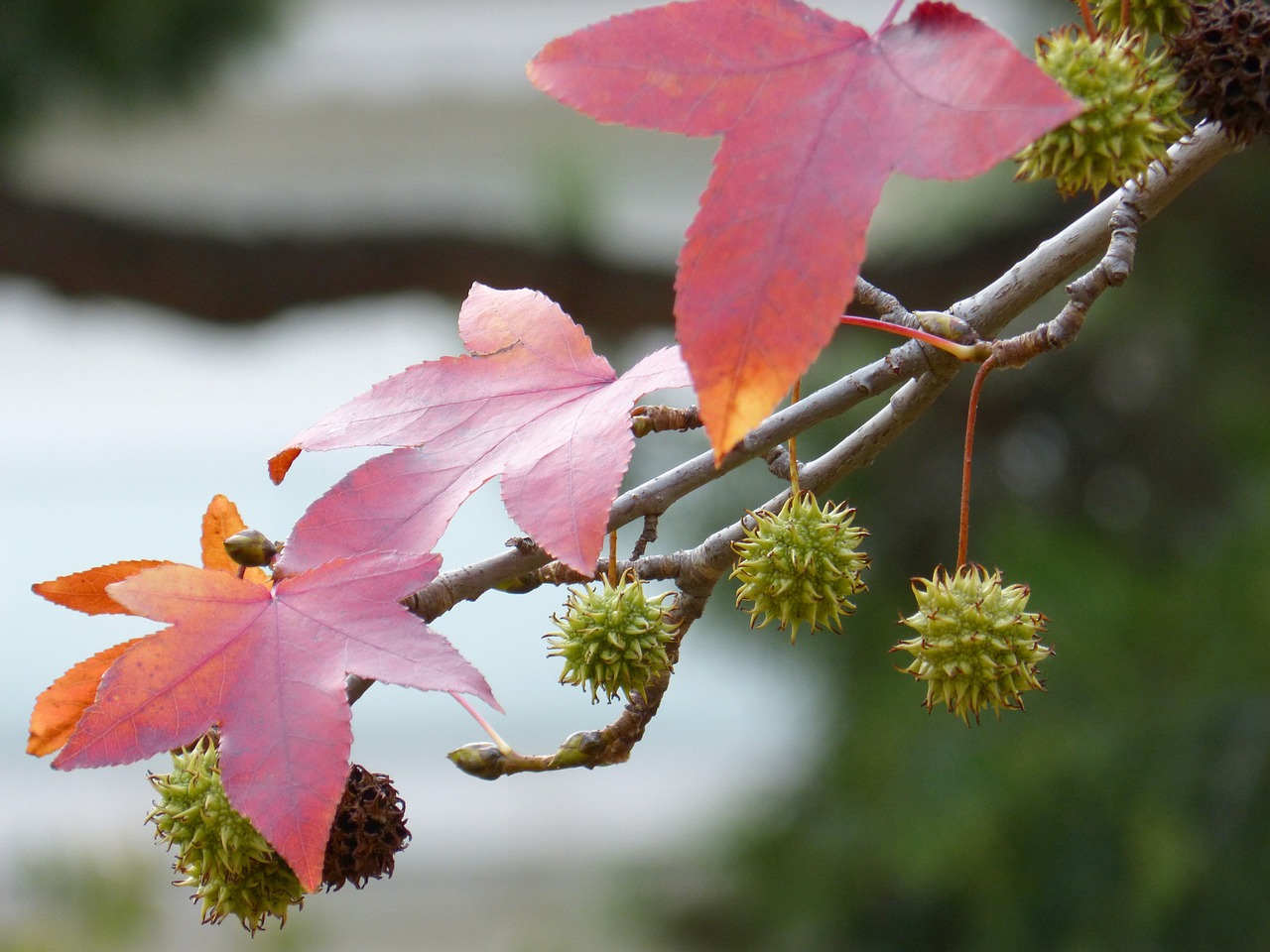
The beautiful sweet gum tree is native to North America, dropping its infamous spiky gum balls each autumn.
Getting Acquainted with Sweet Gum Trees
The Liquidambar styraciflua, or the American sweet gum tree, is a colorful and fragrant deciduous tree that grows in North America. Whether you have a fascination for nature or seek to enhance your yard, sweet gum trees may be the tree for you.
Characterized by a straight trunk and round and spreading shape, the sweet gum tree is an impressive tree that can grow up to 90 feet tall. In April and May, vibrant yellow-green flowers emerge, forming colorful clusters. As the seasons progress, these flowers give way to the infamous gum balls, which are hard, bristly fruiting clusters measuring up to 1.5 inches in diameter.
Where Do Sweet Gum Trees Grow?
Sweet gum trees are indigenous to the warm, temperate regions of eastern North America, as well as the tropical areas of Mexico and Central America. Although native to North America and parts of Asia such as China and Japan, they have been introduced into many other areas around the world.
Optimal Sweet Gum Tree Growth Conditions
Optimal growth conditions for sweet gum trees include deep, moist, and nutrient-rich soils. However, their ability to withstand harsh winters in the northern areas of USDA Zone 5 is not guaranteed. Once established, these resilient trees require minimal upkeep and are adaptable to a range of environments, thriving in humid regions as well as those with consistent rainfall.
What Does a Sweet Gum Look Like?
Easily recognizable due to their distinctive attributes, the sweet gum trees possess a captivating allure. One can readily identify them by observing their unique characteristics. The star-shaped leaves of a sweet gum tree can vary in size, typically ranging from 5 to 7 inches in length. The tree’s bark showcases a gray hue and has deep ridges, adding to its visual appeal.
What Are the Spiky Balls Produced by Sweet Gum Trees?
Come springtime, delightful green blossoms emerge, resembling small spherical balls. However, it is during the autumn season when sweet gum trees truly shine, as they bear their most prominent feature—the spiky brown fruit. Encasing the seeds, these prickly balls make a memorable impression. While sweet gum trees are occasionally mistaken for maple trees due to their similar leaf shapes, one distinguishing factor lies in the sweet gum’s pronounced spikes on its fruit.
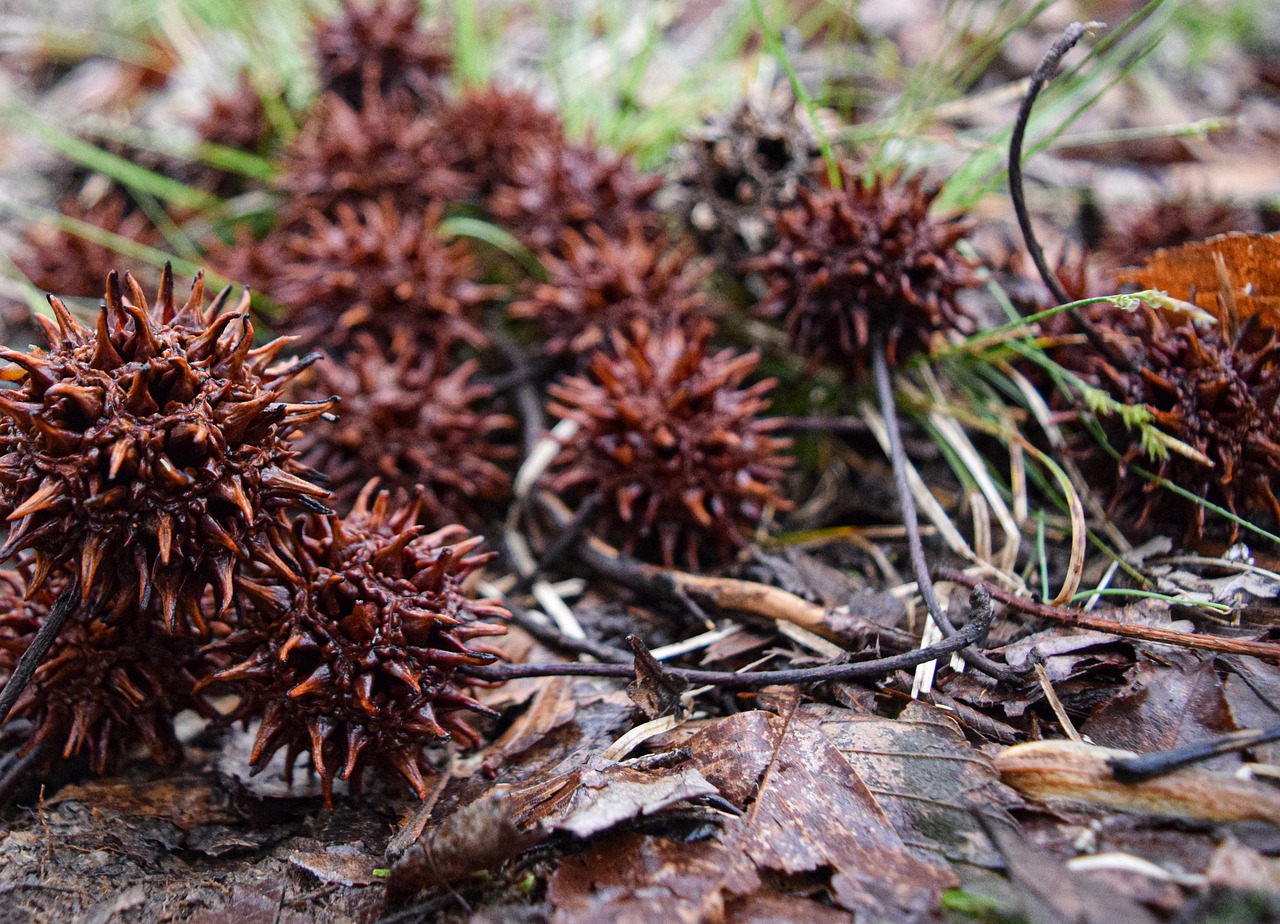
Planting Guide: How to Grow a Sweet Gum Tree
Before making the decision to add shade and color to your yard, it’s important to know the steps to plant a sweet gum tree properly. First, you’ll want to plan ahead and choose the best time to plant. Late winter or early spring is typically ideal, as the ground is moist and the tree can establish its roots before summer heat sets in. Next, you’ll want to make sure you have the right soil conditions, as sweet gum trees prefer well-drained, acidic soil. And finally, when planting, it’s important to know how to deal with sweet gum tree roots – they can be quite large and invasive, so proper spacing and root pruning are key.
How To Maintain a Healthy Sweet Gum Tree
Proper care is essential to the healthy establishment and long-term growth of a newly planted sweet gum tree. During the initial 2-3 years, it is crucial to exercise cautious watering practices for Sweet Gum trees, particularly during prolonged periods of dry weather or heatwaves. Ensure that the soil around the planting area remains adequately moist throughout the day.
Young trees can tolerate temporary flooding and brief periods of stagnant water during hot temperatures. As the heat intensifies and winds pick up, the water requirements of the tree escalate. Once the tree establishes its root system, it becomes proficient at absorbing sufficient water from the surrounding soil.
How Do You Recognize and Treat Common Diseases and Pests that Affect Sweet Gum Trees?
Failing to provide the tree with proper maintenance can lead to diseases. Detecting diseases in the sweet gum tree is possible through the presence of sunken areas on the trunk, sometimes resulting in sap oozing from the affected regions. Various fungal diseases, such as root rot and blight, can afflict sweet gum trees depending on their location within the United States.
For instance, Phymatotrichum root rot (commonly known as Texas root rot) poses a risk to trees in Texas. Another concerning ailment is Phytophthora basal rot, which affects not only sweet gum trees but also rhododendrons, select firs and maples, beeches, and dogwoods. This form of rot causes root decay, impeding the tree’s growth and leading to premature leaf coloration in autumn.
Wood rot, a condition that affects various tree species, includes the development of shelf fungi resembling mushrooms, which emerge from the sweet gum tree’s bark. In severe cases, wood rot can compromise the tree’s stability, resulting in its collapse. Regularly inspect the trunk for any suspicious growth to promptly address potential issues.
Practical Uses for Sweet Gum Trees
Sweet gum trees offer a range of versatile uses across different domains. In landscaping, they serve as ornamental trees, enhancing visual appeal through their unique foliage and captivating structure. The timber of sweet gum trees is valued for its durability and versatility, commonly employed in furniture making, cabinetry, flooring, and veneer.
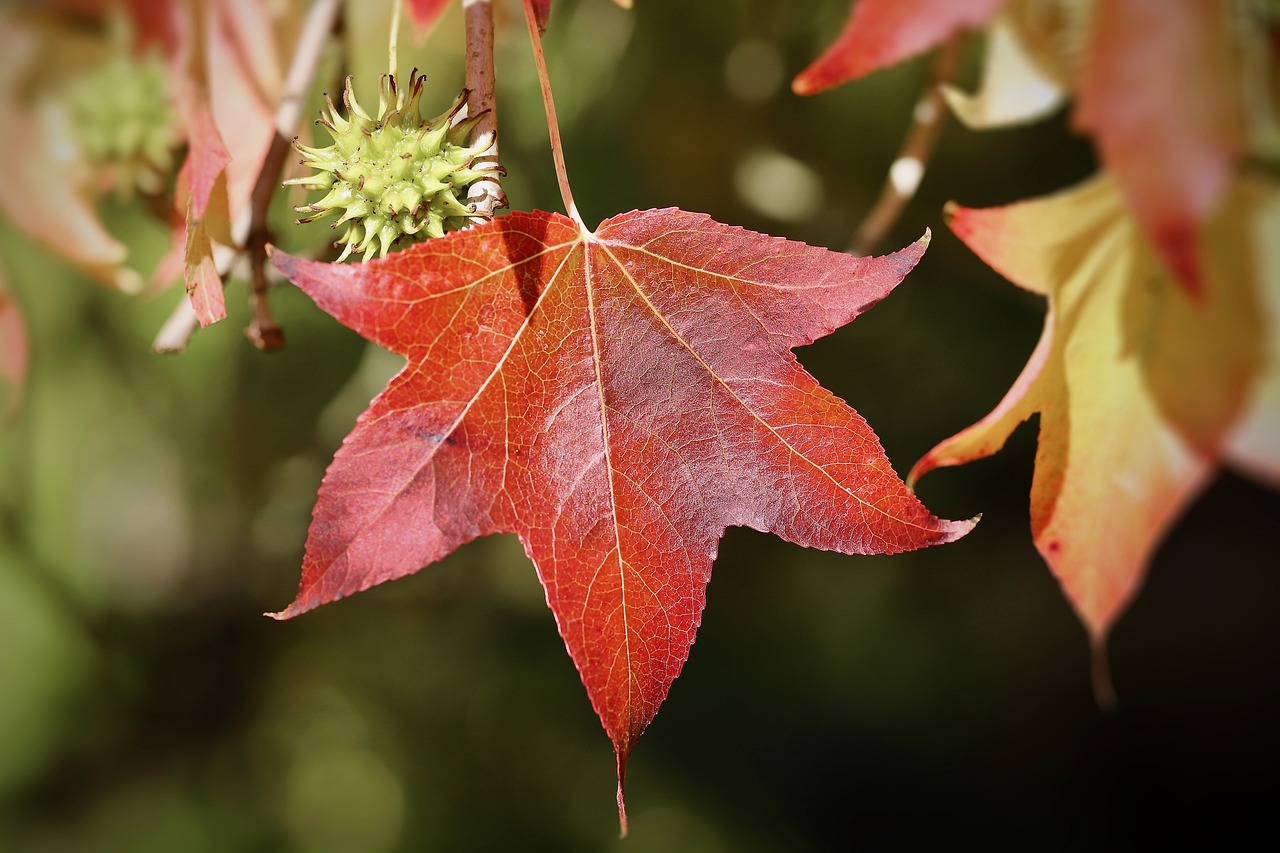
The resin extracted from sweet gum trees has medicinal properties. The gum is chewed for its sweetness and is used in traditional remedies for ailments such as pain, inflammation, and respiratory conditions. The tree’s leaves are also known for their potential therapeutic benefits. With their aesthetic appeal, valuable timber, and medicinal applications, sweet gum trees provide a valuable contribution to various industries and practices.
Sweeten Your Landscape with the Sweet Gum Tree
Consider the Sweet Gum Tree as you explore options for your landscaping needs. However, keep in mind the specific care requirements, especially during the early stages of growth. With proper watering and vigilance against disease, you can enjoy the many benefits that sweet gum trees have to offer.
Embrace the allure of the sweet gum tree and discover how it can elevate your outdoor spaces. Get a quote today to see how Arbor Masters can help you keep your Sweet Gum tree looking sweet.

Get the latest local news, tree care tips, special offers, and company updates directly to your inbox! It's easy to subscribe and there's no spam - we promise.
"*" indicates required fields





